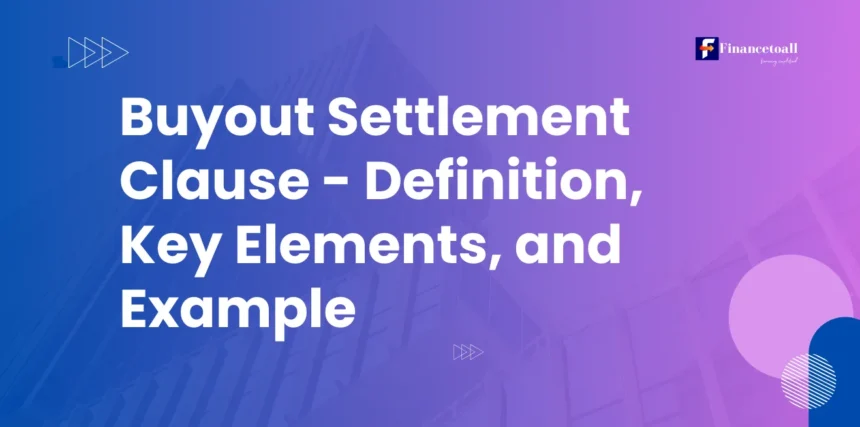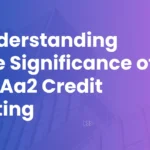Buyout Settlement Clause is a crucial provision in life insurance policies that allows both the insurer and the policyholder to settle long-term or complex claims through a one-time buyout payment. This process eliminates the need for ongoing payments, offering both parties a clear financial outcome.
In this comprehensive guide, we will explore the purpose of buyout settlement clauses, how they function, the elements and considerations involved, and the legal and financial risks associated with them. Whether you’re an individual policyholder or a business entity navigating insurance contract settlements, understanding this clause is vital for managing your long-term financial security.
Key Takeaways
Purpose of a Buyout Settlement Clause
The purpose of a buyout settlement clause is to provide an efficient, definitive solution for both the insurer and the insured party in situations where ongoing payouts over time would otherwise be necessary. This clause is particularly important in cases involving long-term disability insurance, liability insurance contracts, or structured settlements in personal injury cases. For the insurer, the clause helps control future costs by offering a one-time settlement amount, which represents the present value of future payments. This way, the insurer can close the financial book on a claim, eliminating long-term liabilities. On the other hand, the insured benefits by receiving immediate funds, which can be used to meet urgent financial needs, such as medical expenses, rehabilitation, or debt repayment.
In certain cases, especially when ongoing medical treatment or long-term disability is involved, waiting for monthly payouts can leave the insured party in financial distress. The buyout settlement clause provides a financial solution that reduces the wait time and ensures immediate compensation. Additionally, for businesses, partner buyouts or member buyouts offer a way to handle disputes or share reallocation without the long-term financial strain of prolonged agreements.
How Buyout Settlement Clauses Function
At its core, a buyout settlement clause functions by offering a lump-sum payment to the insured in lieu of periodic payouts. This buyout process is initiated when both the policyholder and the insurer agree to the terms of a buyout agreement. The insurer calculates the settlement amount by estimating the future costs associated with the claim, considering inflation, medical expenses, and any other potential liabilities. The goal is to offer the insured an immediate and substantial buyout figure, which allows the insurer to close the case and limit future financial exposure.
For the insured, the buyout settlement often serves as an opportunity to resolve financial uncertainty. Rather than receiving monthly payments over many years, the insured party gets a clear sum of money that can be used for various purposes—whether to cover medical costs, pay off debts, or invest in long-term financial security. However, accepting a buyout settlement requires careful consideration, as it eliminates the possibility of receiving future payments, which could be needed for unforeseen expenses.
To ensure fairness, both parties usually involve legal and financial advisors in buyout discussions. These professionals help the insured party understand the implications of accepting a buyout settlement and ensure that the settlement offer is appropriate for the policyholder’s long-term financial needs. The advisors also ensure that the buyout payment complies with local laws and regulations, which can vary depending on the insurance contract or jurisdiction.
Key Elements of Buyout Settlement Clauses
There are several key elements that define and shape how buyout settlement clauses function. Understanding these components is essential for both policyholders and insurers to ensure that the buyout agreement is fair and beneficial.
- Buyout Figure: The buyout figure is the amount the insurer offers the insured to settle the claim. This figure is calculated based on the projected future payments the policyholder would receive under the terms of the policy, minus any adjustments for the present value of money. Factors such as inflation, medical costs, and the time value of money are considered to arrive at a fair settlement amount.
- Contractual Provision: The buyout settlement clause is typically a formal part of the insurance policy contract. It defines the conditions under which a buyout can be initiated, such as the types of claims eligible for a buyout settlement and the process for calculating the buyout figure.
- Negotiation Process: Buyout discussions between the insurer and policyholder can be complex. Legal and financial professionals may be involved to ensure that both parties agree on a fair buyout agreement. The insured party must weigh the immediate benefit of a buyout payment against the potential risks of underestimating future expenses.
- Agreement Details: The final buyout agreement should specify the terms of the buyout, including the amount, any tax implications, and the legal contracts involved. It must also comply with local laws governing insurance settlements and buyout agreements.
- Implementation of the Buyout Settlement Clause: Once both parties agree to the buyout figure and terms, the buyout payment is issued. This often results in the termination of any further obligation on the part of the insurer to make periodic payments. The policyholder, in turn, forfeits their right to any future claims related to the settled issue.
Importance of Buyout Settlement Clauses
The importance of buyout settlement clauses lies in their ability to provide a clean financial break for both parties. For the insurer, settling a claim early through a buyout agreement helps manage and mitigate long-term financial risk. The buyout settlement clause offers a way to limit exposure to future liabilities and avoid the administrative costs associated with ongoing payments or litigation.
For the insured, a buyout payment can be life-changing, offering a way to cover immediate financial needs. For example, in cases where the insured is dealing with high medical costs, such as in long-term disability insurance, a buyout settlement can provide enough funds to handle urgent expenses without waiting for monthly payouts. Additionally, buyout settlements are common in liability insurance contracts, where businesses facing legal challenges can benefit from the certainty that a lump-sum payment brings.
Components of a Buyout Clause
Breaking down the components of a buyout clause can help policyholders better understand the implications of invoking this contractual provision:
- Eligibility: The buyout settlement clause typically specifies the types of claims that are eligible for a buyout. For example, policies covering long-term disabilities, medical care, or legal liabilities often include buyout clauses.
- Settlement Amount: The buyout figure is a crucial element, and its accuracy determines the fairness of the settlement offer. The insurer calculates this figure based on several factors, including the remaining duration of expected payments and the associated costs.
- Payment Terms: The clause will detail how the buyout payment is to be made. This might include a lump-sum transfer or other agreed-upon terms, such as a buyout agreement, that allow the insured to access their funds quickly.
- Conditions: Certain conditions must be met before the buyout clause can be triggered. For example, the insured may need to provide documentation of ongoing medical expenses or financial hardship to qualify for a buyout payment.
Why Use a Buyout Clause?
There are several compelling reasons why both policyholders and insurers might prefer to invoke a buyout settlement clause rather than continuing with periodic payments. From the insurer’s perspective, a buyout agreement provides an opportunity to close the books on a claim early, reducing both the administrative burden and the uncertainty of future liabilities. The insurance provider benefits from knowing the exact cost of a settlement upfront, which helps with financial planning and risk management.
For the policyholder, the benefits can be equally compelling. Instead of waiting for smaller payments over time, they receive a lump-sum payment that they can immediately use to cover expenses, invest, or meet financial goals. A buyout also provides a sense of closure, particularly for individuals dealing with long-term medical or financial challenges. The decision to accept a buyout settlement can help the insured party move forward without the need for ongoing interaction with their insurance provider.
How Buyout Clauses Work
Implementation Process
Policyholders initiating a buyout settlement clause must first inform the insurer formally. Submit all required documentation such as policy details and identification. Timely communication is crucial to avoid delays or misunderstandings. Seeking legal advice ensures compliance with regulations and smooth implementation.
To exercise a buyout settlement clause, policyholders need to follow specific steps. Firstly, notify the insurer officially about the decision. Collect and submit essential documents like policy information. Maintaining clear and prompt communication is vital for a seamless process. Seeking legal counsel can provide guidance on navigating the intricate implementation procedures.
Effectiveness of Buyout Settlement Clauses
The effectiveness of buyout settlement clauses depends on how well they meet the needs of both the insurer and the policyholder. From the insurer’s point of view, a buyout settlement can be a cost-effective way to reduce long-term liabilities and avoid the uncertainty that comes with ongoing payouts. By offering a clear buyout figure, the insurer can control the financial impact of the claim, ensuring that future costs do not exceed the present settlement amount.
For the policyholder, the effectiveness of a buyout settlement clause largely depends on their financial situation and ability to manage a large buyout payment. For some, a buyout can provide much-needed immediate financial relief, while for others, the risk of depleting the funds too quickly can create long-term financial instability. Thus, the effectiveness of buyout clauses must be evaluated on a case-by-case basis.
Legal and Regulatory Considerations
The buyout settlement process involves several important legal considerations. In many jurisdictions, laws dictate how buyout agreements must be structured and ensure that the insured receives fair compensation. Additionally, the parties must consider the legal implications of accepting a buyout settlement. For example, by agreeing to a buyout, the policyholder typically forfeits their right to any future claims related to the issue, making it important to fully understand the contractual provisions.
For businesses involved in partner buyouts or shareholder agreements, these legal considerations become even more complex. In these cases, buyout agreements not only settle financial matters but also reallocate ownership or control within the company. For example, a business facing a lawsuit may opt for a buyout agreement to avoid further legal disputes or potential damage to its reputation. In such cases, both parties must ensure that the buyout agreement complies with local laws and business regulations.
Real-Life Example: Long-Term Disability Insurance Buyout
A good way to understand the practical application of a buyout settlement clause is through real-life examples. Consider the case of John, a 45-year-old marketing executive who suffered a severe back injury, rendering him unable to work. John had a long-term disability insurance policy through his employer, which provided him with monthly benefits equal to 60% of his salary. According to his insurance policy, he was eligible to receive these benefits until the age of 65.
Two years after his injury, John’s insurer offered him a buyout settlement. Instead of continuing to receive monthly payments of $5,000 for the next 18 years, totaling $1,080,000, the insurance provider calculated a buyout payment of $600,000, considering the present value of money and inflation. By accepting this buyout agreement, John could address his immediate financial needs, such as paying off medical bills and investing in a new business venture.
However, John also had to consider the long-term risks of accepting a buyout settlement. What if his health deteriorated further, or he faced additional medical expenses? After consulting with a buyout agreement guru and his financial advisor, John decided to accept the buyout figure and use part of the money to invest in a passive income business, ensuring his financial security.
Negotiating a Buyout Settlement
Negotiating a buyout agreement requires careful planning and an understanding of the long-term financial implications for both parties. For the insurer, the goal is to offer a buyout payment that adequately reflects the buyout settlement clause‘s terms while protecting against future liabilities. For the policyholder, the key is to ensure that the settlement offer is fair and will meet their long-term financial needs.
In most cases, the buyout agreement process involves negotiations where both parties try to reach a mutually beneficial arrangement. For the insured, seeking advice from legal and financial experts is essential. Professionals can help analyze the buyout figure, tax implications, and potential long-term costs to ensure the buyout settlement aligns with the insured’s financial goals. Similarly, the insurer must carefully assess the risks associated with a buyout, particularly in cases where future medical or rehabilitation costs are difficult to predict.
In many cases, the settlement amount offered initially is subject to negotiation, especially when future costs are uncertain. A thorough evaluation of medical expenses, inflation rates, and the financial outlook helps both parties reach a buyout agreement that works for everyone.
Tax Implications of Buyout Settlements
One of the most important factors in any buyout agreement is understanding the tax implications of the buyout settlement. Depending on the jurisdiction and the type of insurance policy involved, buyout payments may be subject to various taxes, such as income tax or capital gains tax. In some cases, disability insurance settlements are exempt from income tax, which can make accepting a lump-sum payment more attractive for the policyholder. However, other types of buyout agreements, such as those involving businesses or liability insurance contracts, may carry significant tax burdens.
To avoid surprises, it’s essential for the insured to consult with tax professionals and financial advisors when negotiating a buyout settlement. Understanding how the settlement amount will be taxed is critical for integrating the buyout payment into long-term financial planning.
Weighing the Benefits and Risks of a Buyout Settlement Clause
Ultimately, the decision to accept a buyout settlement comes down to weighing the benefits against the potential risks. For the insurer, offering a buyout allows for cost control and financial predictability. It removes the uncertainty of ongoing payouts and limits exposure to future litigation. For the insured, the buyout settlement clause offers immediate financial relief, which can be used to address pressing needs, such as medical bills, personal debt, or business investment.
However, the risks for both parties must be considered. For the policyholder, the primary risk is that the buyout figure may not be sufficient to cover future expenses. If medical costs increase or unforeseen expenses arise, the insured party could face financial difficulties down the road. For the insurer, the risk lies in underestimating the future value of the claim. If the buyout payment is too high, the insurer may end up paying more than if it had continued with periodic payments.
In most cases, careful financial planning and professional advice can help mitigate these risks. By fully understanding the terms of the buyout settlement clause, both the insured and the insurer can make informed decisions that serve their best interests.
Conclusion: Weighing the Options
The buyout settlement clause offers a practical, efficient solution for settling long-term claims. For the insured, it provides immediate financial relief and a sense of closure, while for the insurer, it helps control costs and reduce future liabilities. However, the decision to accept a buyout settlement must be made carefully, considering the long-term financial implications, tax consequences, and potential future needs.
Both parties should seek professional advice before finalizing a buyout agreement to ensure that the terms are fair and legally compliant. By fully understanding the workings of buyout settlement clauses and weighing the risks and benefits, both the policyholder and insurer can achieve the best outcome for their unique circumstances.
Frequently Asked Questions on Buyout Settlement Clause
Q.1 What is a buyout settlement clause?
A buyout settlement clause is a provision in a contract that outlines the terms under which one party can buy out or terminate the agreement before its natural expiration. It typically includes details on payment terms and conditions for the buyout.
Q.2 What are the key elements of buyout clauses?
Key elements of buyout clauses include the specific conditions triggering the buyout, the process for initiating it, any penalties or fees involved, and the timeline for completion. These elements are crucial for both parties to understand their rights and obligations clearly.
Q.3 How do buyout clauses work?
Buyout clauses work by providing a predetermined framework for either party to exit the contract prematurely. When triggered, the party seeking to terminate the agreement must follow the procedures outlined in the clause, including meeting any financial obligations specified in the contract.
Q.4 Can you provide an example of a buyout clause?
An example of a buyout clause could be in a partnership agreement where if one partner wishes to leave the business, they can trigger the buyout clause. The clause may specify that the departing partner must sell their shares to the remaining partner(s) at a pre-determined price.
Q.5 Why are buyout settlement clauses important?
Buyout settlement clauses are essential as they offer parties a clear exit strategy if circumstances change. They provide certainty and protection by establishing guidelines for potential buyouts, reducing disputes, and ensuring a smoother transition if one party decides to end the agreement prematurely.








